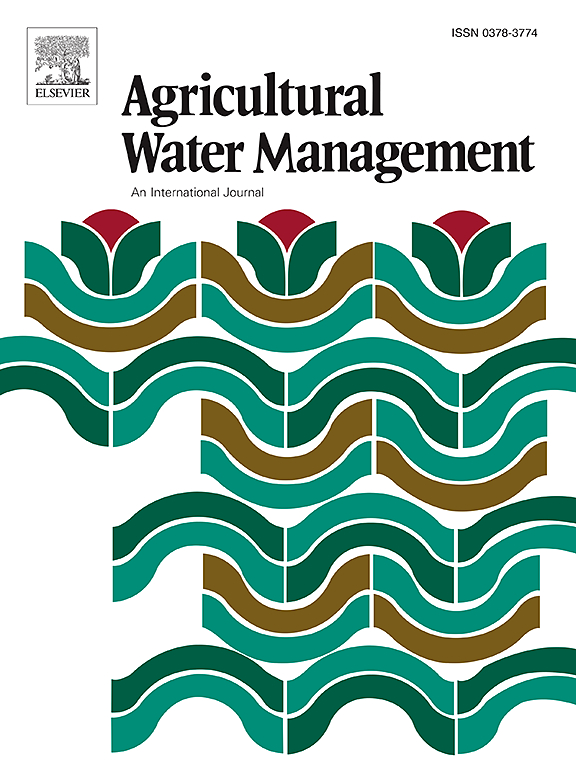Straw incorporation: A more effective coastal saline land reclamation approach to boost sunflower yield than straw mulching or burial
IF 5.9
1区 农林科学
Q1 AGRONOMY
引用次数: 0
Abstract
In coastal lands, soil salinity greatly impedes crops growth and severely affects the agricultural productivity. Returning the crop straw and residual to soil was considered an important land reclamation method; however, the approach of straw return varied, including mulching (SM), burial (SB), and incorporation (SI). This study aimed to determine which approach was most effective to ameliorate coastal saline land and boost crop yield. Field experiments were conducted under different straw amelioration treatments on dry farming sunflowers (Helianthus annuus Linn.) in Bohai coastal land of Northern China. The results indicated that SM and SB changed the soil salt profile and significantly reduced the topsoil (0–0.2 m) salt content mainly by their direct effects on soil water transport, with little impacts on soil structure changes. Differently, SI significantly increased 21.8 % soil organic carbon and 52.3 % soil mean weight diameter in straw incorporated layer. The improvement on soil aggregates and porosity reduced 24.1–38.9 % of topsoil salt content, by limiting soil salt accumulation and promoting salt leaching. Furthermore, SI significantly boosted the sunflower fine root (d< 1.0 mm) growth and resulted in the highest sunflower yield (4.7 t/ha in 2020 and 4.6 t/ha in 2021) among those straw treatments. Compared to SM and SB, the net revenues of two-years sunflower cultivation under SI were improved by 40.68 % and 31.22 %, respectively. Therefore, it concluded that straw incorporation was more effective to reclaim coastal saline soil than straw mulching or burial. In addition, a back propagation artificial neural network model was developed to predict the dynamic of sunflower yield. This outcome provides an insight into the management of coastal farmland by establishing an easily desalinized and fertile topsoil profile structure.
秸秆覆盖:与秸秆覆盖或掩埋相比,更有效的沿海盐碱地开垦方法可提高向日葵产量
在沿海地区,土壤盐碱化极大地阻碍了农作物的生长,严重影响了农业生产力。然而,秸秆还田的方法多种多样,包括覆盖(SM)、掩埋(SB)和掺入(SI)。本研究旨在确定哪种方法对改善沿海盐碱地和提高作物产量最有效。在中国北方渤海沿海地区,对旱作向日葵(Helianthus annuus Linn.)进行了不同秸秆改良处理的田间试验。结果表明,SM 和 SB 主要通过直接影响土壤水分迁移改变了土壤盐分分布,显著降低了表层土壤(0-0.2 米)的含盐量,对土壤结构变化影响不大。不同的是,SI 能显著增加秸秆覆盖层中 21.8% 的土壤有机碳和 52.3% 的土壤平均重径。通过限制土壤盐分积累和促进盐分沥滤,土壤团粒结构和孔隙度的改善降低了 24.1-38.9%的表土含盐量。此外,SI 还能明显促进向日葵细根(d< 1.0 毫米)的生长,并使向日葵产量在这些秸秆处理中最高(2020 年为 4.7 吨/公顷,2021 年为 4.6 吨/公顷)。与SM和SB相比,在SI下种植向日葵两年的净收益分别提高了40.68%和31.22%。因此,结论是秸秆掺入比秸秆覆盖或掩埋更能有效开垦沿海盐碱地。此外,还建立了一个反向传播人工神经网络模型,用于预测向日葵产量的动态变化。这一成果为通过建立易于脱盐和肥沃的表土剖面结构来管理沿海农田提供了启示。
本文章由计算机程序翻译,如有差异,请以英文原文为准。
求助全文
约1分钟内获得全文
求助全文
来源期刊

Agricultural Water Management
农林科学-农艺学
CiteScore
12.10
自引率
14.90%
发文量
648
审稿时长
4.9 months
期刊介绍:
Agricultural Water Management publishes papers of international significance relating to the science, economics, and policy of agricultural water management. In all cases, manuscripts must address implications and provide insight regarding agricultural water management.
 求助内容:
求助内容: 应助结果提醒方式:
应助结果提醒方式:


